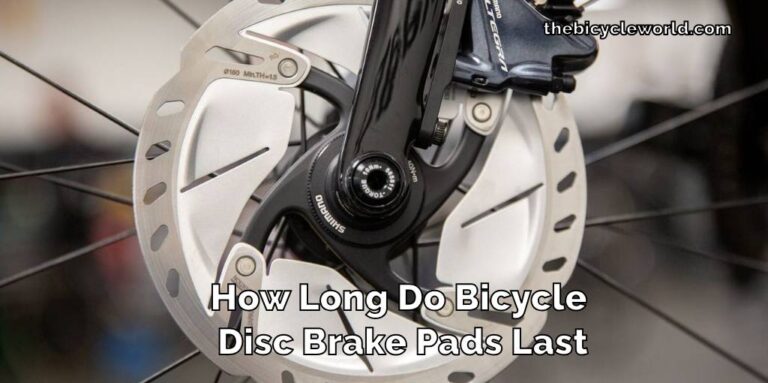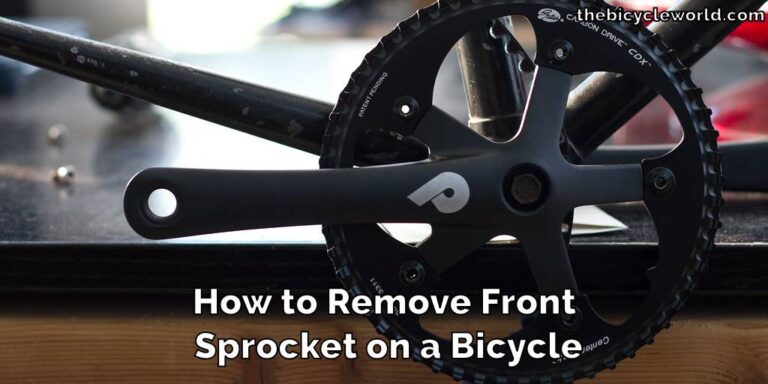How to Carry a Surfboard on Bike
Introduction
Carrying a surfboard on a bike might seem like a challenging task, but with the right tools and techniques, it can be quite simple and enjoyable. This method of transportation is not only eco-friendly but also allows surfers to avoid the hassle of finding parking near popular beaches.
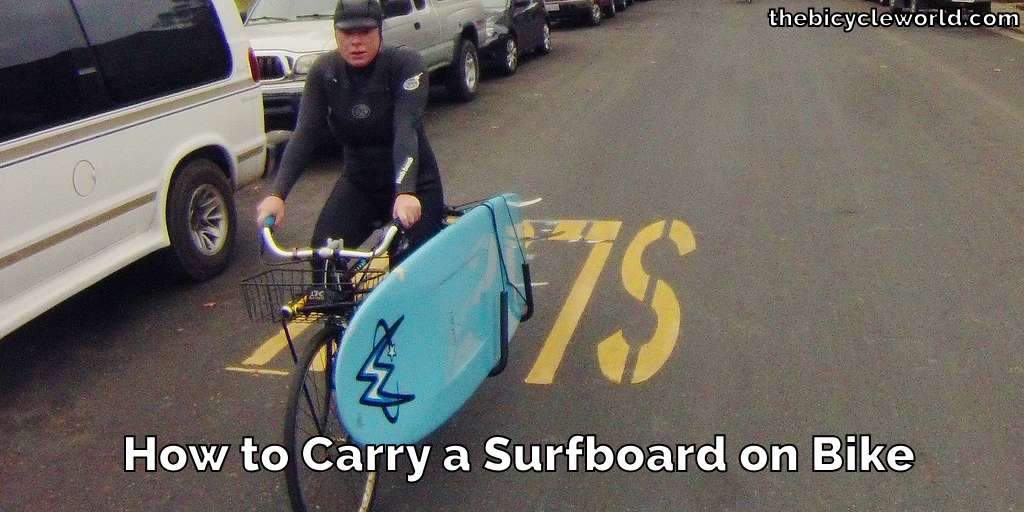
In this article, we will explore how to carry a surfboard on bike. We’ll also discuss the necessary tools required for this task, ensuring a smooth and secure journey to the waves.
Advantages of Transporting a Surfboard by Bike
Transporting a surfboard on a bike is a fantastic choice for those who live near the beach or prefer an active way to travel. This method is especially beneficial because it helps you save money on fuel and avoid the often expensive parking fees near beaches. Riding a bike is also a greener option, as it reduces the amount of harmful emissions compared to driving a car, thus lowering your environmental impact.
Another significant advantage is the physical exercise you get from biking. It’s a great way to get your body moving and increase your heart rate, preparing you physically and mentally for surfing. This pre-surf warm-up can enhance your performance on the waves, as your muscles are already activated and ready for action.
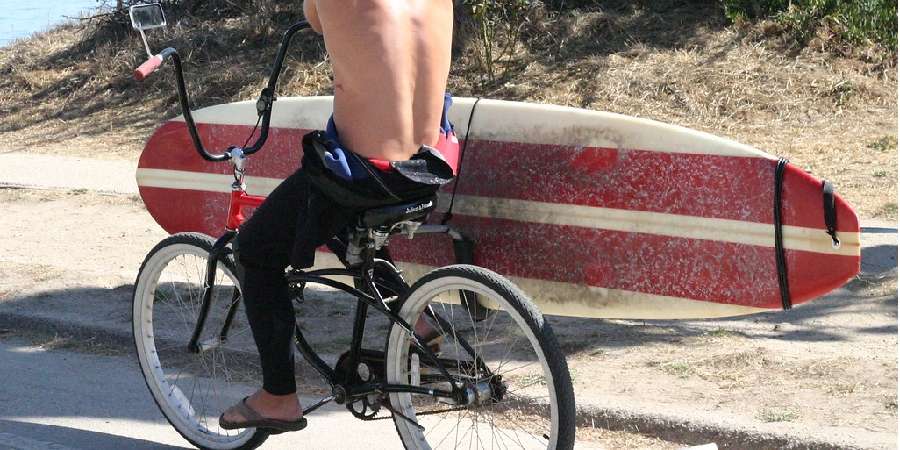
Biking with your surfboard also means you can avoid traffic congestion. It’s much easier to maneuver a bike through crowded areas than to drive a car, saving you time and reducing stress. Once you reach the beach, you won’t have to spend time searching for a parking spot. You can simply lock your bike and head straight to the surf.
This approach to transporting your surfboard isn’t just about convenience it’s a step towards a healthier, more active lifestyle. Choosing to bike rather than drive can contribute to your overall fitness and well-being. It also offers a more enjoyable and engaging way to travel, allowing you to appreciate the outdoors and feel more connected to your journey to and from the beach.
Choosing to carry a surfboard on a bike is an excellent option for those seeking an efficient, eco-friendly, and health-promoting way to enjoy their surfing sessions. It simplifies the journey to the beach and adds an element of physical activity, making the surfing experience even more rewarding.
Tools We Need to Carry a Surfboard on a Bike
Carrying a surfboard on your bike is a smart way to get to the beach, but it requires the right equipment to ensure your board is safe and secure during the ride. The right tools make the process easier and protect your surfboard from any damage. Here’s what you’ll need:
- Surfboard Bike Rack or Carrier: This is the main tool you need. It’s a special rack designed to hold your surfboard securely while you ride. Make sure to choose a rack that fits your bike and can handle the size and weight of your surfboard.
- Bungee Cords or Straps: These are used to tie the surfboard down to the rack. They keep the board from moving around while you’re biking.
- Protective Surfboard Bag: It’s a good idea to put your surfboard in a bag before attaching it to the rack. This protects the board from scratches and dings.
When choosing these tools, it’s important to ensure they are of good quality and suitable for your surfboard and bike. A sturdy rack, reliable straps, and a protective bag are essential for a safe and worry-free trip to the beach.
How to Carry a Surfboard on Bike
Carrying a surfboard on a bike is a practical skill for surfers. It involves several straightforward steps to ensure that your surfboard is transported safely and efficiently. Here’s a detailed guide:
Choosing the Right Rack
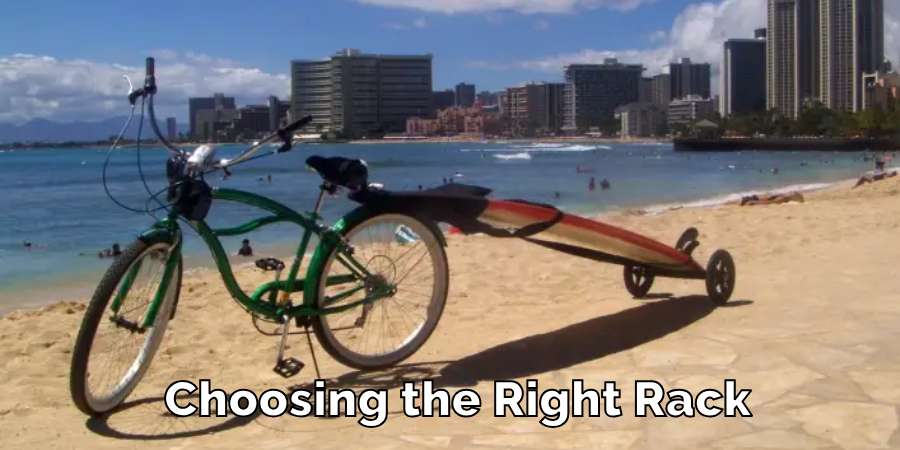
The first step is to pick a suitable surfboard bike rack. There are different types of racks available, including side-mounted and rear-mounted options. Consider the type of bike you have and the size of your surfboard when making this choice. A good rack should fit your bike snugly and be strong enough to hold your surfboard’s weight and size.
Installation
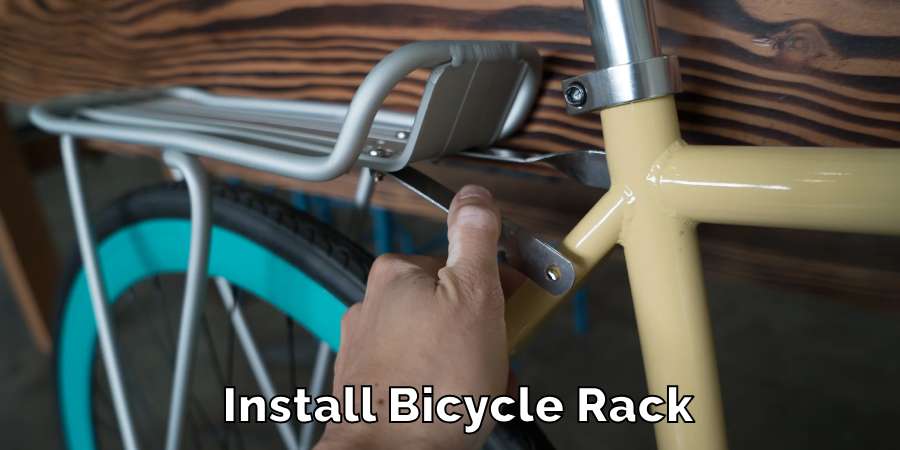
Once you have the right rack, the next step is to attach it to your bike. Follow the instructions provided by the manufacturer carefully. Make sure that the rack is fastened tightly and securely to your bike. A loose rack can lead to accidents or damage your surfboard.
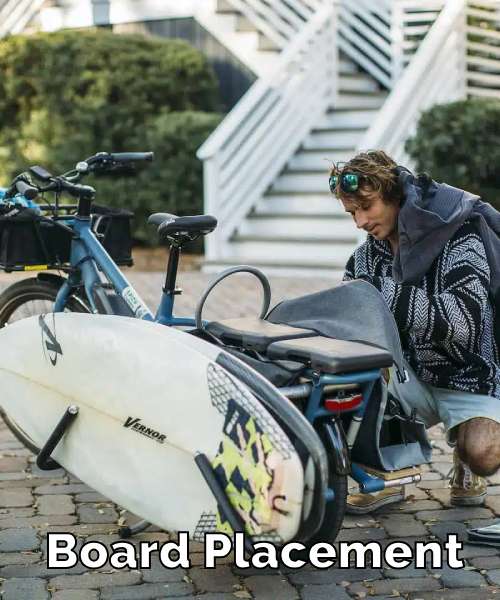
Board Placement
After installing the rack, place your surfboard onto it. For added protection, it’s best to put your surfboard in a protective bag before placing it on the rack. When positioning the board, ensure that it’s centered on the rack with the fins facing upwards and the nose pointing forward. This positioning helps maintain balance and prevents any damage to the fins.
Securing the Board
Next, use bungee cords or straps to tie down your surfboard to the rack securely. The aim is to prevent any movement or wobbling of the board as you ride. Check that the straps are tight and secure, but be careful not to apply too much pressure that might damage the board.
Testing
Before you head out, it’s important to do a test ride to check the balance and stability of the surfboard on your bike. Ride slowly at first and make any necessary adjustments to the positioning or the tightness of the straps. This step ensures that everything is set up correctly and that you’re comfortable riding with the surfboard.
Mindfulness While Riding
While riding, be mindful of the extra length and weight that the surfboard adds to your bike. Take turns gently and give yourself extra time and space to stop. It’s also important to be aware of your surroundings, especially low-hanging branches or narrow passages.
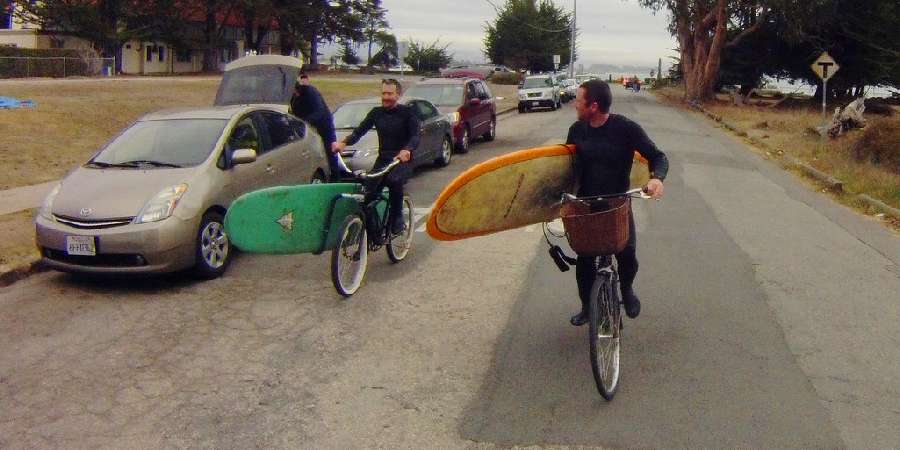
Arrival and Unloading
Once you arrive at your destination, carefully remove the surfboard from the rack. Unstrap the bungee cords or straps and gently lift the board off the rack.
By following these steps, you can safely and effectively carry your surfboard on a bike. This method not only makes your trip to the beach more enjoyable but also adds an element of convenience and eco-friendliness to your surfing experience.
Precaution While Carrying a Surfboard on a Bike
Taking your surfboard with you on a bike ride to the beach can be a great experience, but it’s important to do it safely. Here are some key safety tips to keep in mind:
- Secure Attachment: Always make sure your surfboard is securely fastened to the bike rack. It should be balanced and tightly strapped to avoid any movement during the ride.
- Be Mindful of Size Changes: Remember that your bike is longer and wider with the surfboard attached. This is especially important when you’re riding in areas with traffic or narrow paths.
- Avoid Fast Riding: It’s safer to ride at a moderate speed when you have a surfboard with you. High speeds can make it harder to control the bike.
- Careful with Turns: Avoid making sharp turns. These can cause the board to shift or the bike to become unstable.
- Watch for Obstacles: Look out for low-hanging branches, signposts, or other obstacles that could hit the surfboard. These can cause accidents or damage your board.
While carrying a surfboard on a bike adds fun and convenience to your beach trip, it’s essential to take these precautions for a safe journey. By being aware of these safety tips, you can enjoy a smooth ride to the beach with your surfboard in tow.
FAQ’s
How Do You Carry a Surfboard on a Bike Without a Rack?
If you don’t have a rack, you can still carry your surfboard on your bike. Use foam pads to cushion your bike frame and protect it from scratches. Lay the surfboard on these pads and fasten it securely with bungee cords or straps.
This method works best for short trips because it’s not as stable as using a rack. You’ll need to check frequently to ensure the surfboard remains securely in place. Remember, this isn’t the best option for long or rough rides as the board can shift more easily and may become a hazard.
How Do You Attach a Surfboard to a Bike?
To attach a surfboard to a bike, use a surfboard bike rack. First, install the rack on your bike, following the instructions that come with it. Once the rack is in place, lay your surfboard on it, ensuring the fins are facing upwards and the board’s nose is pointing forward. Use straps or bungee cords to tie the board down firmly.
The key is to make sure the surfboard is balanced and doesn’t wobble, as this can make biking difficult and dangerous. Double-check that everything is secure before you start your journey.
How Do You Carry Things on a Bike Rack?
Carrying items on a bike rack is straightforward. For various items, consider using panniers, baskets, or specialized bike bags. These attach directly to your bike rack and are great for holding groceries, personal items, or other gear. When loading your items, distribute the weight evenly on both sides of the rack to maintain good balance.
Secure all items firmly to prevent them from falling off while you’re riding. For heavier or larger items, ensure your bike rack is rated for the weight you’re carrying. It’s always important to avoid overloading your bike, as this can affect your ability to steer and brake properly.
What is the Best Way to Transport a Surfboard?
The best method for transporting a surfboard depends on the distance you need to travel and what’s most convenient for you. For shorter distances, like a quick ride to a nearby beach, using a bike with a surfboard rack or carrying the board by hand with a surfboard sling is ideal.
These methods are eco-friendly and give you a bit of exercise. For longer distances, using a car with a roof rack is the best choice. It’s more stable and safer for the board, especially when traveling on highways or longer routes. The key is to choose a method that’s practical for your situation and ensures the safety of your surfboard.
How Do You Secure a Surfboard Without a Rack?
Securing a surfboard to a bike without a rack can be done, but it requires extra care. Place foam pads on your bike frame to provide cushioning for the surfboard. Then, lay the board on top of these pads and use straps or bungee cords to tie it down securely to the bike frame.
Make sure the board doesn’t obstruct your pedaling or steering. This method is less stable and suitable mainly for short distances.
It’s important to frequently check the board to ensure it remains securely attached. If possible, investing in a proper surfboard rack for longer or more frequent trips is advisable, as it provides greater stability and safety.
Conclusion
Transporting a surfboard on a bike is not only a smart and eco-friendly choice, but it also adds a fun and active element to your surfing trips. By using the right equipment and following the correct methods, you can easily and safely take your board to the beach.
This approach is not only good for saving money on gas and avoiding the hassle of parking, but it also helps you stay fit and active. It’s a great way to contribute to a cleaner environment by reducing carbon emissions. Always prioritize safety and ensure your board is securely fastened to avoid any accidents.
Enjoy the ride and the waves – biking with your surfboard can make your surfing experience even more enjoyable and rewarding. This article has explored how to carry a surfboard on bike.
You may read also – How to Tie Down a Bicycle in A Truck Bed





